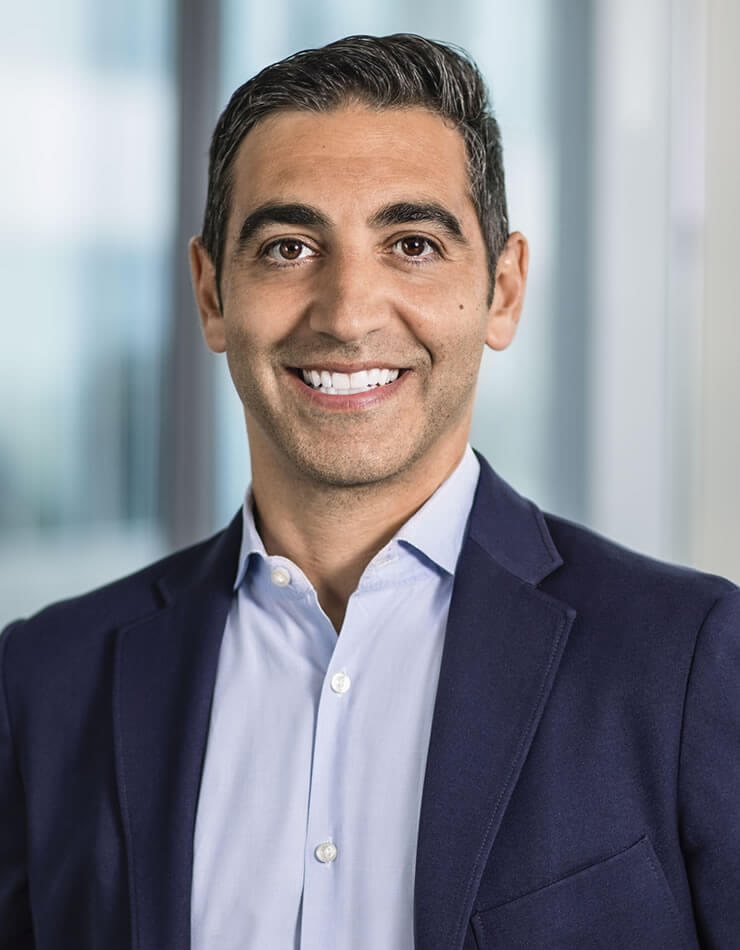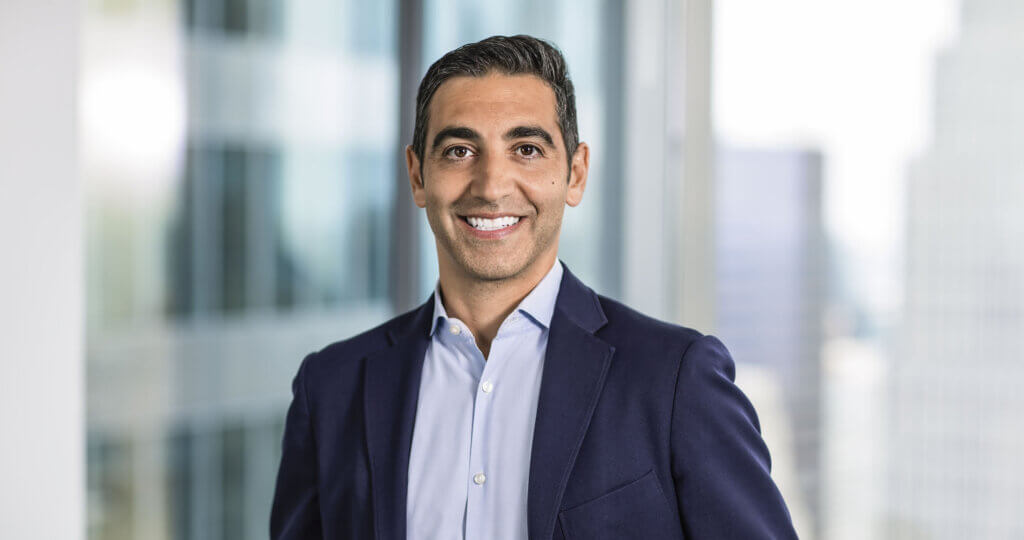Oakmark Equity and Income Fund – Investor Class
Average Annual Total Returns 12/31/22
Since Inception 11/01/95 9.32%
10-year 7.31%
5-year 4.70%
1-year -12.92%
3-month 7.19%
Expense Ratio: 0.84%
Expense ratios are as of the Fund’s most recent prospectus dated January 28, 2022, as amended August 1, 2022 and October 1, 2022; actual expenses may vary.
Past performance is no guarantee of future results. The performance data quoted represents past performance. Current performance may be lower or higher than the performance data quoted. The investment return and principal value vary so that an investor’s shares when redeemed may be worth more or less than the original cost. To obtain the most recent month-end performance data, view it here.
It has been a tough year for balanced funds. A 60% stock (S&P 500)/40% bond (Barclays Government Credit) portfolio was down 16% for the year. This is one of the worst performances for this portfolio in the past 50 years. The problem was that both stocks and bonds had lousy years in 2022. Historically, stocks’ and bonds’ returns are not correlated. Usually, a bad year for stocks is offset by a positive year for bonds. In fact, during the past four bear markets for stocks, Treasury bonds provided positive returns. This inverse relationship, along with generally strong equity returns, has led to impressively resilient returns for balanced portfolios; in the past 48 years, a 60/40 portfolio has been down over 5% only three times! Additionally, during this period, 60/40 portfolios have generated an average annual return of 10.5% while experiencing less volatility than all equity funds. Given such strong historic returns, the disappointing performance in 2022 surprised many long-time balanced fund supporters. Some commentators even questioned whether balanced funds still deserved a spot in investors’ portfolios. While we are certainly not happy with our Fund’s negative return for the year—even though we did outperform our benchmark, the Lipper Balanced Fund Index—we believe that 2022 will prove to be an outlier. The reset in both equity and fixed income valuations should dampen volatility and allow future returns to be closer to historic averages.
The main reason for our optimism about future returns is that fixed income markets are starting 2023 in a much healthier place than they began in 2022. At the start of 2022, interest rates were at historically low levels. These low interest rates, along with substantial, pandemic-era government stimulus, jump-started inflation, which reached a 40-year high in 2022. In response, the Fed raised the Federal Funds rate by over 400 basis points, and the yield on the 10-year Treasury rose by around 220 basis points to 3.8%. Corporate debt yields rose even more as credit spreads widened throughout the year. By the end of 2022, the option-adjusted spread on BBB corporate bonds had hit 197 basis points—up 72 basis points from the start of the year. These low rates and tight credit spreads provided little margin of safety for a rate increase, and as a result, the Barclays Agg was down 13% for the year. Although the Fed’s actions were painful for bond prices and economic activity, they had some success in taming inflation. Longer term inflation expectations appear to have peaked and have dropped around 30 basis points over the past several months to 2.3%. We believe this economic slowdown will be manageable and not lead to a large decline in economic activity. The much higher yields will also boost prospective bond returns. Historically, starting bond yields and subsequent real returns have been positively correlated, especially when inflation is under control. We are excited that fixed income should contribute much more meaningfully to the portfolio return in years ahead.
Like fixed income markets, equity markets also had a difficult year. The S&P 500 was down 18% due to various headwinds, including slowing economic activity from higher interest rates as well as higher equity discount rates. Companies that performed well during Covid-19, including many so-called high growth companies with little earnings, were especially hard hit in 2022. Consumer discretionary and financial stocks also struggled as the year progressed. Although stocks may face a difficult short-term environment due to slowing growth and higher interest rates, the S&P 500 valuation is now close to its historic norm. Also, there is currently a wider than normal distribution of price/earnings ratios in the stock market. We expect many of the lowest priced stocks to recover as the economy rebounds. Finally, greater dispersion provides a good opportunity for our analyst group to identify attractive new investment ideas.
The recent changes in the market environment have important implications for the Fund’s asset allocation. Unlike most other balanced funds, we do not adhere to a predetermined weighting between equities and fixed income. Instead, we vary our asset allocation depending on where we find the most value. As a result, during the previous market cycle when interest rates were very low, we favored equities. Over the past decade, the Fund’s equity weighting was above 60%, and at the peak of Covid-19, it was over 70%. However, due to the recent and rapid rise in interest rates, we believe that the risk/reward of fixed income has improved dramatically. Our current fixed income portfolio yields an attractive 5.6%, and higher interest rates should also mean that bond and stock returns will once again be less correlated, which should also dampen portfolio volatility. This much more positive outlook for fixed income can be seen in the Fund’s new fixed income and cash weighting, which ended the quarter at 42%.
Given the significant price movements in equities and fixed income, individual investors should also reassess their asset allocation, just as we have. Make sure your current asset allocation is appropriate for your risk tolerance and for your financial objectives. If you have been avoiding fixed income due to low interest rates, you might benefit from reevaluating the asset class now that conditions have changed. Also, keep in mind that balanced funds’ historically lower volatility has enabled many investors to weather market turbulence while still realizing attractive returns. With the recent changes in the fixed income environment, we believe that balanced funds can once again fulfill this role.
Quarter and Calendar-Year Review
The Equity and Income Fund (“Fund”) increased 7.2% in the fourth quarter, compared to a 6.4% increase for the Lipper Balanced Fund Index. For the year, the Fund is down 12.9%, compared to a 14.4% decline for the Lipper Index. Since its inception in 1995, the Fund’s compounded annual rate of return is 9.3%, while the Lipper Index’s return is 6.6%. The largest contributors to the portfolio’s return in the quarter were HCA Healthcare, ChampionX, Glencore, BorgWarner and Reinsurance Group of America. The largest detractors were Amazon, Alphabet, Carlisle, Ally Financial and Warner Bros. Discovery. Top contributors for the year included Reinsurance Group of America, Glencore, ChampionX, PDC Energy and ConocoPhillips. The largest detractors were Charter Communications, TE Connectivity, Ally Financial, Alphabet and General Motors.
Energy was the clear standout sector for the quarter and the year. This was primarily due to the significant rebound in oil and gas prices from Covid-19 lows as well as the much-improved capital allocation for the industry as a whole. Although the sector is not as attractive as it was at the start of 2022, we believe that the Fund’s energy holdings remain attractive and are still priced at a discount to a reasonable future oil price.
Detractors were more varied than in past years. Charter sold off due to fears about fixed wireless and overbuilders, but we still believe that cable will remain the dominant source for high-speed internet connectivity for the foreseeable future. Economically sensitive stocks and bank stocks also had a rough year. Even though these companies’ business fundamentals are quite strong, investors are clearly worried that these industries are in jeopardy. Although the economy certainly could enter a recession, we believe that that these stocks will be fine through the cycle.
Transactions
During the quarter, we added one new position—Masco, a leader in home improvement products. We believe the market is failing to properly reward the company’s significant upgrades in its product offerings over the past decade. During this time, management has sold off the company’s more cyclical, lower return businesses, such as insulation and windows and cabinets, and now Masco focuses its efforts on some of the strongest and most recognizable brands in the industry. The company’s portfolio of products—primarily coatings (Behr) and plumbing fixtures (Delta, Hansgrohe)—are more resilient, lower cost and higher margin categories. Both product segments compete within heavily consolidated industries, exhibit solid pricing power, and skew meaningfully toward the less cyclical repair-and-remodel markets. Despite this greatly improved business mix, Masco trades at a discount to historical levels and comfortably below a market multiple. We believe this dislocation presents an attractive opportunity for us to invest in a well-managed, high-quality portfolio in a sector that’s currently out of favor.
We eliminated four positions during the quarter: Philip Morris International, ConocoPhillips, Global Payments and Johnson Controls. Philip Morris was a frustrating holding because the company’s strong business fundamentals were almost entirely offset by the strengthening dollar throughout our holding period. Conoco was a successful holding, which we sold to increase our position in EOG. We sold Global Payments to utilize a tax loss and to increase our position in Fiserv, a similar business that offers better fundamentals at a comparable valuation. Johnson Controls was a good investment that benefitted from a new management team and a renewed interest in energy-efficient buildings.
We would like to thank our fellow shareholders for their investment in the Fund and welcome any questions or comments.
The securities mentioned above comprise the following preliminary percentages of the Oakmark Equity and Income Fund’s total net assets as of 12/31/22: Ally Financial 1.7%, Alphabet Cl A 3.7%, Amazon 2.2%, BorgWarner 2.1%, Carlisle 2.0%, ChampionX 0.5%, Charter Communications 1.5%, ConocoPhillips 0%, EOG 1.0%, Fiserv 1.8%, General Motors 2.2%, Glencore 3.1%, Global Payments 0%, HCA Healthcare 2.8%, Howard Hughes 1.3%, Johnson Controls 0%, Masco 1.0%, PDC Energy 1.8%, Philip Morris International 0%, Reinsurance Group of America 2.1%, TE Connectivity 2.3% and Warner Bros Discovery 0.6%. Portfolio holdings are subject to change without notice and are not intended as recommendations of individual stocks.
The Bloomberg Barclays U.S. Government/Credit Bond Index measures the non-securitized component of the U.S. Aggregate Index. It includes investment grade, U.S. dollar-denominated, fixed-rate Treasuries, government-related and corporate securities. This index is unmanaged and investors cannot invest directly in this index.
The S&P 500 Total Return Index is a float-adjusted, capitalization-weighted index of 500 U.S. large-capitalization stocks representing all major industries. It is a widely recognized index of broad, U.S. equity market performance. Returns reflect the reinvestment of dividends. This index is unmanaged and investors cannot invest directly in this index.
The Lipper Balanced Fund Index measures the equal-weighted performance of the 30 largest U.S. balanced funds as defined by Lipper. This index is unmanaged and investors cannot invest directly in this index.
The compound return is the rate of return, usually expressed as a percentage that represents the cumulative effect that a series of gains or losses has on an original amount of capital over a period of time. Compound returns are usually expressed in annual terms, meaning that the percentage number that is reported represents the annualized rate at which capital has compounded over time.
The Fund invests in medium- and lower-quality debt securities that have higher yield potential but present greater investment and credit risk than higher-quality securities, which may result in greater share price volatility. An economic downturn could severely disrupt the market in medium or lower grade debt securities and adversely affect the value of outstanding bonds and the ability of the issuers to repay principal and interest.
The Oakmark Equity and Income Fund’s portfolio tends to be invested in a relatively small number of stocks. As a result, the appreciation or depreciation of any one security held by the Fund will have a greater impact on the Fund’s net asset value than it would if the Fund invested in a larger number of securities. Although that strategy has the potential to generate attractive returns over time, it also increases the Fund’s volatility.
The information, data, analyses, and opinions presented herein (including current investment themes, the portfolio managers’ research and investment process, and portfolio characteristics) are for informational purposes only and represent the investments and views of the portfolio managers and Harris Associates L.P. as of the date written and are subject to change and may change based on market and other conditions and without notice. This content is not a recommendation of or an offer to buy or sell a security and is not warranted to be correct, complete or accurate.
Certain comments herein are based on current expectations and are considered “forward-looking statements”. These forward looking statements reflect assumptions and analyses made by the portfolio managers and Harris Associates L.P. based on their experience and perception of historical trends, current conditions, expected future developments, and other factors they believe are relevant. Actual future results are subject to a number of investment and other risks and may prove to be different from expectations. Readers are cautioned not to place undue reliance on the forward-looking statements.
All information provided is as of 12/31/2022 unless otherwise specified.









